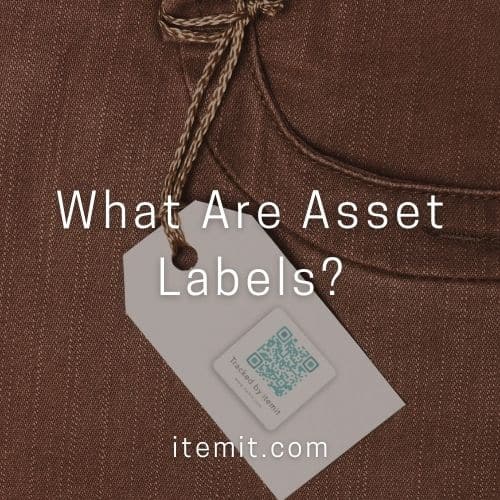With asset labels, you’ll be able to keep better track of your things. Implementing an asset tracking system is crucial in speeding up your operations and reducing the chances of problems in your fixed asset register. Asset labels will help with this greatly.
With asset labels, you’ll be able to:
- Link your physical assets to digital profiles
- Add data, such as issues, to your assets at speed
- Audit your assets faster and more effectively
- Maintain an automated and up-to-date asset register
So, how can you use asset labels to speed up your operations?
What Are Asset Labels?
Asset labels are physical tags which you can stick onto your assets. The way they work is by allowing you to scan this tag in your asset tracking software. Then, a linked profile will open up, ready for editing and updating.
Every time you scan an asset’s tag, too, the asset’s last seen location and the user who scanned the tag will be updated automatically. Therefore, you get a neat audit trail of where your assets have been and who has been interacting with them.
All you need to do is create your asset profiles and link the asset tags to these profiles. In other words, each of your assets will get a unique profile in your asset management software. So, if you’re implementing IT asset management, you’ll create an asset profile for a laptop. Then, you’ll be able to populate this asset profile with data such as depreciation information, maintenance history, and location information.
Finally, you’ll add an asset label so that when it’s scanned, this profile will open ready for edits and the last seen location will update.
The Types Of Asset Labels
There are multiple types of asset labels. For example, you can have QR code asset tags, barcode asset labels, or RFID tags.
Each has slightly different functionalities. For example, you’ll be able to scan RFID tags from a distance and without the tag in view, however, you’ll need a third-party reader to do so. This is best for high-value asset tracking where you can’t place a QR code in view.
QR Code Asset Tags
QR code asset tags are helpful for most of your asset tracking as they’re simple and effective.
The main benefit of QR code asset tags is that you’ll be able to guarantee that they’re unique, meaning they’ll be able to be tied to unique assets with ease.
itemit’s QR codes use URLs which also activates our public profiles feature, meaning anyone can report issues against assets without needing the app.
RFID Tags
RFID tags can be active or passive, and you can also choose between fixed RFID asset tracking and the use of a handheld reader.
The benefit of fixed RFID asset tracking is that all of your assets’ movements are automatically updated in your asset tracking software. If you’re implementing healthcare asset tracking, therefore, when equipment moves between wards, this will automatically update.
Using handheld readers benefits you if you’re tracking high-value assets, such as paintings or wine, as you’ll be able to scan the tag without it needing to be in view.
Barcode Asset Labels
Barcodes work in a similar way to QR code asset tags. However, it’s much more difficult to guarantee that they’re unique as often pricing information is what the barcode contains.
Both QR code asset tags and barcode asset labels can be customised. This means for assets in the field you’ll be able to use anodised aluminium QR code asset tags so that weathering is less of an issue.
To find out more about itemit’s asset labels and how you can use them in your asset tracking, you’ll be able to book a demo using the button below.
You can also contact us at team@itemit.com or by calling 01223 421611 to find out more about your asset tagging options.
Why not check out these blogs:
Why You Shouldn’t Use A Construction Equipment Tracking Spreadsheet
Using Fixed Asset Management Software For Small Businesses
How Does A Computer Asset Management System Work?
Try Out Your Own Asset Labels!
Start your free 14-day trial now
Instant access. No credit card details required.


